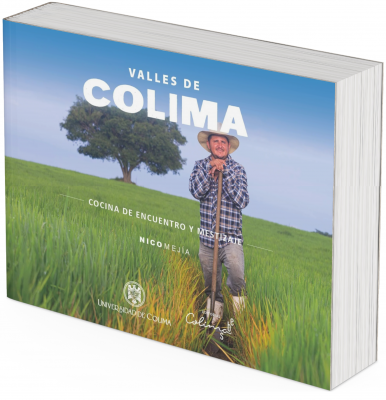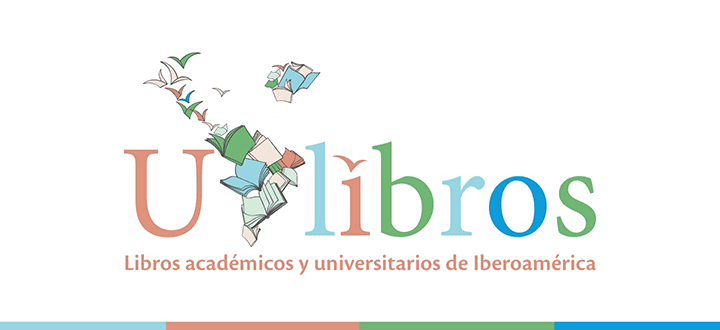Valleys of Colima: Mixed Race Cuisine and Self Discovery
Keywords:
Valleys of Colima, Food culture, Colima gastronomySynopsis
Like bowls, the seven valleys of Colima: Tecomán, Armería, Ixtlahuacán, Colima, Coquimatlán, Manzanillo, and Cihuatlán, have accumulated the richness of the entire territory of Colima. The diversity of the climates of the region and their products have been captured, but they have also been the space in which they have made an impact in the economic and social dynamics which have transformed the food culture in the last 500 years.
Fortunately, cultural resistance has made it possible to keep ingredients and techniques that, in time, have established themselves as part of each community’s identity. Thew chigüilines from Coquimatlán, the menguiche, or the sopa de pán from the valleys around the capital, the chococo tamales from Ixtlahuacán, and even the fiestas charrotaurinas from Villa de Álvarez, just to mention a few examples of live gastronomy, are a legacy and a testimonial o the different peoples that have transformed and enrichened the valley’s cuisines.
Valleys of Colima is the fourth book of the “Colima. Una gran travesía gastronomica” series, an unprecedented editorial project that collects recipes, ingredients, cooks, producers, expressions, and stories that make up the rich culinary tradition of the region of Colima.
Co-publishing hose
Editorial Colima Sabe
Downloads
References
Agency for Toxic Substances and Disease Registry (ATSDR) (2022). https://www.atsdr.cdc.gov/spl/
Almendros, L., y González, F. (2009). El Occidente de México. La reocupación del Valle de Colima. En Boletín Americanista. No. 59, pp. 137-154.
Báez-Jorge, Félix (1998). Entre los nahuales y los santos. Xalapa, México: Universidad Veracruzana.
Bertioli, D.J.; Cannon S.B.; Froenicke L., et al. (2016). The genome sequences of Arachis duranensis and Arachis ipaensis, the diploid ancestors of cultivated peanut. En Nature Genetics, 48, 483-446. https://doi.org/10.1038/ng.3517
Bertioli, D.J.; Jenkins, J.; Clevenger, J., et al. (2019). The genome sequence of segmental allotetraploid peanut Arachis hypogea. En Nature Genetics, 51, 877-884. https://doi.org/10.1038/s41588-019-0405-z
Broda, Johana (2004). Ciclos agrícolas en la cosmovisión prehispánica: el ritual mexica. En Johana Broda y Catharine Good Eshelman (Coords.). Historia y vida ceremonial en las comunidades mesoamericanas: los ritos agrícolas. México: INAH.
Carrasco, Pedro (1976b). "La sociedad mexicana antes de la Conquista", en Historia General de México. T.I. México: El Colegio de México. https://doi.org/10.2307/j.ctv5cg92x.7
Comisión Nacional para el Conocimiento y Uso de la Biodiversidad (CONABIO). (2016). La Biodiversidad en Colima: Estudio de Estado. CONABIO, México.
Comisión Nacional para el Conocimiento y Uso de la Biodiversidad (CONABIO). (2016). La biodiversidad en Colima: Estudio de Estado. CONABIO, MÉXICO.
Comisión Nacional para el Conocimiento y Uso de la Biodiversidad (CONABIO) (diciembre 2022). Enciclovida. CONABIO. https://enciclovida.mx/
Comisión Nacional para el Conocimiento y Uso de la Biodiversidad (CONABIO) (diciembre 2022). Razas de maíz de México. CONABIO. https://www.biodiversidad.gob.mx/diversidad/alimentos/maices/razas-de-maiz
Da Silva, M.B.; Portela, J.M.; Li, W.; Jackson, M.; Gonzalez-Juarrero, M.; Hidalgo, A.S., et al. (2018) Evidence of zoonotic leprosy in Para', Brazilian Amazon, and risks associated with human contact or consumption of armadillos. En PLoS Neglected Tropical Diseases, 12(6): e0006532. https://doi.org/10.1371/journal.pntd.0006532
De Ciudad Real, Antonio (1993). Tratado curioso y docto de las grandezas de la Nueva España. [En línea]. (3ª ed.). México: Universidad Nacional Autónoma de México. http://www.historicas.unam.mx/publicaciones/publicadigital/libros/156_01/tratado_curioso.html
De Gayangos, Pascual (1866). Cartas y relaciones de Hernán Cortés al emperador Carlos V. Corregidas e ilustradas por don Pascual Gayangos. París: Imprenta central de los ferrocarriles. http://cdigital.dgb.uanl.mx/la/1080012643/1080012643_01.pdf
De Quiñones, Lebrón (2006). Relación sumaria. Con paleografía y nota introductoria de Terríquez Sámano, Ernesto. México: Gobierno del Estado de Colima / Secretaría de Cultura.
Fuentes, G., y Santamaría, J. (2014). Papaya (Carica papaya L.): Origin, domestication, and production. En: Ming R. y Moore P., Genetics and genomics of papaya, plant genetics and genomics: Crops and models. Springer. https://doi.org/10.1007/978-1-4614-8087-7_1
Gan, E. (2017). An unintended race: Miracle rice and the green revolution. En Environmental Philosophy, 14: 1. https://doi.org/10.5840/envirophil20174648
Global Biodiversity Information Facility (GBIF). (2022). Free and open access to biodiversity data. GBIF. https://www.gbif.org
Gunn, B.; Baudouin, L., y Olsen, K. (2011). Independent origins of the cultivated coconut (Cocos nucifera L.) in the old world tropics. En PLoS ONE, 6, e21143. https://doi.org/10.1371/journal.pone.0021143
Inglese, P., y Sortino, G. (2019). Citrus history, taxonomy, breeding, and fruit quality. En Oxford Research Encyclopedia, Environmental Sciences. Oxford. https://doi.org/10.1093/acrefore/9780199389414.013.221
Kistler, L.; Yoshi, S.; Gregorio de Souza, J., et al. (2018). Multiproxy evidence highlights a complex evolutionary legacy of maize in South America. En Science, 362, 1309-1313. https://doi.org/10.1126/science.aav0207
Kraft, K.; Brown, C.; Nabhan, G.; Luedeling, E.; Luna, J.; d'Eeckenbrugge, G.; Hijmans, R., y Gepts P. (2014). Multiple lines of evidence for the origin of domesticated chili pepper, Capsicum annuum, in Mexico. En Proceedings of the National Academy of Sciences of the United States of America, 111, 6165-6170. https://doi.org/10.1073/pnas.1308933111
López Lara, Ramón (1973). Nota preliminar. El obispado de Michoacán en el siglo XVII. Informe inédito de Beneficios, Pueblos y Lenguas, vol. III. Morelia: Fimax Publicistas. Colección Estudios Michoacanos.
López Razgado, María Irma y Ochoa Gutiérrez, María del Carmen (2021). Archivo Histórico Parroquial de San Felipe de Jesús, "El Beaterio", siglo XVII. Volumen 1 de Serie Historia eclesiástica. Sociedad Defensora del Tesoro Artístico de México. Capítulo Colima: Gobierno del Estado de Colima, Secretaría de Cultura.
Machuca, Paulina (2018). El vino de cocos en la Nueva España. Historia de una transculturización en el siglo XVII. México: El Colegio de Michoacán.
Mariscal Olivares, José Manuel (2008). Los Chayacates. México: Gobierno del Estado de Colima / Secretaría de Cultura.
Mejía, N. (2018). Colima. Una gran travesía gastronómica. Colima, México: Colima Sabe.
Mejía, N. (2021). Montañas de Colima. Una cocina de altura. Colima, México: Colima Sabe.
Mijares Bracho, Carlos (2000). La Petatera de la Villa de Álvarez en Colima. México: Universidad de Colima.
Morales, Juan Joseph (1978). Iztlahuacán y sus Pueblos. 1778. México: Club del Libro Colimense. No. 23.
Pennington, T.D., y Sarukhán, J. Árboles tropicales de México. Manual para la identificación de las principales especies. UNAM/Fondo de Cultura Económica.
Pickersgill, B. (1971). Relationship between weedy and cultivated forms in some species of chili peppers (genus Capsicum). En Evolution, 25, 683-691. https://doi.org/10.1111/j.1558-5646.1971.tb01926.x
Piperno, D.R.; Ranere, A.J.; Holst, I.; Iriarte, J., y Dickau R. (2009). Starch grain and phytolith evidence for early ninth millennium B.P. maize from the Central Balsas River Valley, México. En Proceedings of the National Academy of Sciences of the United States of America, 106, 5019-5024. https://doi.org/10.1073/pnas.0812525106
Redfiel, R. (1944). Yucatán, una cultura de transición. México: Fondo de Cultura Económica.
Reyes Garza, Juan Carlos (2000). Al pie del Volcán. Los indios de Colima en el Virreinato. Historia de los pueblos indígenas de México. México: CIESAS, GEC, INI. Vol. II).
Riojas-López, M.; Pérez, N., y Mellink, E. (2014). Mamíferos terrestres de Manzanillo, Colima a El Salto, Jalisco (excepto murciélagos), guía de campo. Colima: Universidad de Colima.
RISCTOX. Clorofenil metanona. https://risctox.istas.net/dn_risctox_ficha_sustancia.asp?id_sustancia=957687
Rodríguez-Aguilar, B.A., Ceballos-Magaña, S.G., Virgen-Campos, L.F. y Muñiz-Valencia, R. (2021). Método analítico para la determinación de plaguicidas y su aplicación en aguas superficiales de Colima y Guanajuato. En Ra Ximhai. Vol. 17, No. 3, pp. 257-277. https://doi.org/10.35197/rx.17.03.2021.11.br
Rodríguez-Aguilar, B.A., Martínez-Rivera, L.M., Muñiz-Valencia, R., Mercado-Silva, N., Íñiguez-Dávalos, L.A., y Peregrina-Lucano, A.A. (2022). Pesticide distribution and ecotoxicological risk in the Ayuquila-Armería River. En Rev. Int. Contam. Ambient. No. 38, pp. 301-315. https://doi.org/10.20937/RICA.54180
Romero Aceves, Ricardo (2001). El señorío de Coliman y la Nueva España. México: Costa-Amic Editores.
Rouiss, H.; Bakry, F.; Froelicher, Y.; Navarro, L.; Aleza, P., y Ollitraut, P. (2018). Origin of C. latifolia and C. aurantiifolia triploid limes: the preferential disomic inheritance of doubled-diploid 'Mexican' lime is consistent with an interploid hybridization hypothesis. En Annals of Botany, 121, 571-585. https://doi.org/10.1093/aob/mcx179
Sauer, Carl O. (1990). Colima de la Nueva España en el siglo XVI. Terríquez Sámano, Ernesto, González Chávez, René, traductores. México: Universidad de Colima. Ayuntamiento Constitucional de Colima.
Secretaría de Agricultura, Ganadería, Desarrollo Rural, Pesca y Alimentación (SAGARPA). (2015). Agenda Técnica Agrícola Colima. SAGARPA.
Servicio de Información Agroalimentaria y Pesquera (SIAP). (2022). Avance de siembras y cosechas, resumen por estado. SIAP. http://infosiap.siap.gob.mx:8080/agricola_siap_gobmx/ResumenProducto.do
Sharpe, P. (1998). Sugar cane: Past and present. En Ethnobotanical leaflets. Southern Illinois University Carbondale. https://opensiuc.lib.siu.edu/cgi/viewcontent.cgi?article=1388&context=ebl
Silva, G.S., y Souza, M.M. (2020). Origin of the cultivated passion fruit Passiflora edulis f. flavicarpa and genomic relationships among species of the subgenera Decaloba and Passiflora. En Plant Biology, 22, 533-540. https://doi.org/10.1111/plb.13100
Takeo, T.A.; Mapes, C.; Mera, L.M.; Serratos, J.A., y Bye, R.A. (2009). Origen y diversificación del maíz. UNAM/CONABIO.
Vázquez Vuelvas, Petronilo (2014). ¡Échenme el toro! Historia viva de la tradición villalvarense. México: Acento Editores.
Wu, G.; Terol, J.; Ibanez, V., et al. (2018). Genomics of the origin and evolution of Citrus. En Nature, 554, 311-316. https://doi.org/10.1038/nature25447
Zizumbo-Villarreal, D. (1996). History of coconut (Cocos nucifera L.) in Mexico: 1539-1810. En Genetic Resources and Crop Evolution, 43: 505-515. https://doi.org/10.1007/BF00138827

Downloads
Published
License

This work is licensed under a Creative Commons Attribution-NonCommercial-ShareAlike 4.0 International License.







